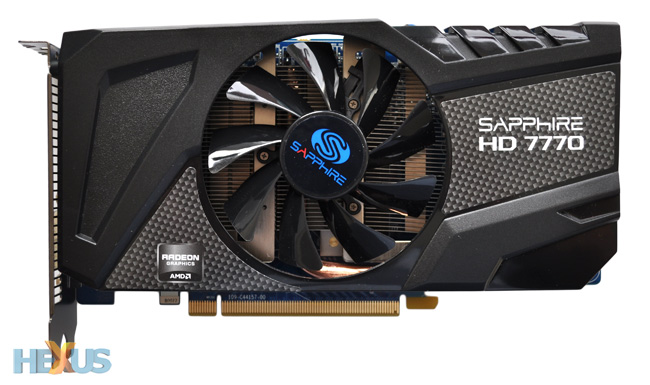Final thoughts and rating
Launching a truly high-end GPU perhaps isn't as hard as it seems. Pack as much technology as possible into an oversized chip, stick it on an elongated PCB with a good amount of memory, draw as much power as needed, and attach an exorbitant price. The framerate that results will usually have enthusiasts champing at the bit, but the real difficulty lies in taking top-end parts and reconstructing them for the mainstream market.
In this scenario, hitting the right balance between price and performance isn't quite as easy as it seems, and the Radeon HD 7770 is testament to that. The card's good, and admirably efficient, but a launch-day MSRP of around £125 puts it up against last-generation alternatives that are just as adept at high-def gaming, if not more so.
As a consequence, pre-overclocked and custom-cooled Radeon HD 7770s that demand a higher premium face an uphill task. Sapphire's HD 7770 OC takes the core clock up to a staggering 1,150MHz - which is close to the upper limit of the Cape Verde GPU - but despite being one of the coolest and quietest cards we've tested, it needs to be priced closer to £100 if it's to truly stand out from the established Radeon HD 6850.
Bottom line: Upcoming games and driver updates may help exploit the benefits of the GCN architecture, but we wouldn't trade in our 6850s just yet.

The Good
Comfortably quicker than a reference HD 7770
Extremely quiet under load
Good cooler
The Bad
Cards with more brute power are available for less
HEXUS Rating

Sapphire Radeon HD 7770 OC
HEXUS Where2Buy
The Sapphire Radeon HD 7770 OC graphics card is available to purchase from scan.co.uk*.
HEXUS Right2Reply
At HEXUS, we invite the companies whose products we test to comment on our articles. If any company representatives for the products reviewed choose to respond, we'll publish their commentary here verbatim.
*UK-based HEXUS community members are eligible for free delivery and priority customer service through the SCAN.care@HEXUS forum.













